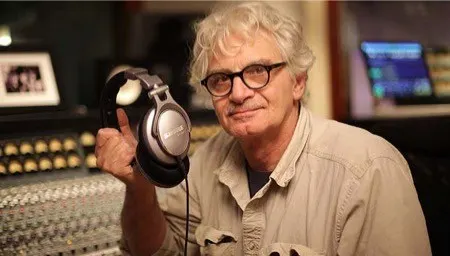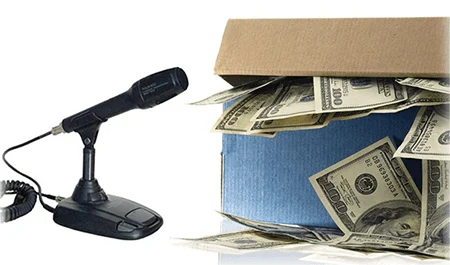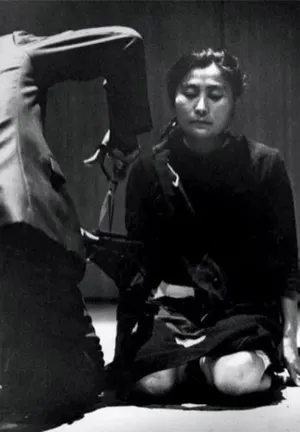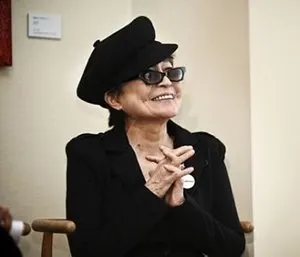Nobody in music draws the ire of rock fans more than Yoko Ono. While some of this naturally stems from longstanding accusations that she broke up The Beatles, it’s also derived from the fact that she’s done some weird stuff in the name of music (and attention) for decades.
Perhaps nothing is weirder than her insistence on recording a “dead rat in a shoebox” solo – in two takes, no less.
Setting the Stage for Yoko Ono Insanity
The year was 1972. Record producer Jack Douglas – who’s worked with musicians like Miles Davis and Aerosmith – was tapped to record Ono’s double album Approximately Infinite Universe. One of the songs that was slated for the album was a tune entitled “Dead Rat,” and it quite literally featured a deceased rat.

Douglas wasn’t quite sure what the song was going to be like when he started working on the tune. Its first iterations had music intertwined with blocks of silence at various points as if there was to be some incredible electric guitar solo that demanded no backing tracks.
The quiet chunks of the song were a mystery to Douglas, until Yoko Ono brought in the mystery shoebox.
The box was opened to reveal a large rat… one that had given up the ghost and shed its mortal coil. According to Douglas, after the dead rodent was revealed, Ono gave a bizarre instruction: the moment that the band stops playing was the spot for the rat to take its solo.
Ever the professional, Douglas set the shoebox on a stool and placed a pricy microphone a few inches away from the vermin. The rat “solo” was recorded where it should have been placed in the song; as expected, there was no noise picked up, on account of the rat being a goner. Yet this was not good enough for Ono.

Bonus points if you read the quote above in a British accent.
According to Douglas, Ono told him that there was something wrong with the take. Douglas played along and sent his assistant to adjust the position of the microphone, as if to pick up a different sonic footprint of nothingness. After the mic had been moved slightly to the left and a few inches up, they re-recorded the bit.
Douglas asked Ono if the second time around was better. She replied in the affirmative in the most serious manner. They’d go on to record the rest of the album, which included songs like “I Felt Like Smashing My Face in a Clear Glass Window.”
Approximately Infinite Universe ended up being a double album. Even though there were four sides of vinyl, there was still no room for “Extinguished Rat Rock” to make the cut. The dulcet tones of an expired rodent remain a mystery to the public (and everyone who listened, I’d venture to guess).
The Obvious Question – Why Record a Rat?
It could be easy to read this story and wonder why Douglas would put up with Ono’s shenanigans. After all, it’s clear that no sound could emanate from a dead rat apart from the “thud” its body would make if the shoebox were to be shaken vigorously. Yet there are two factors that must be considered that demonstrate why Douglas would play along (besides the obvious)…

First, Ono was and is a performance and avant-garde artist first (even to this day) and a musician second (one could argue if she’s a musician at all). It’s easy to forget this, because her persona is so strongly linked to John Lennon and the demise of The Beatles.
But even before she met Lennon at an art gallery in 1966, she was making a name for herself as a creator of art pieces that fluctuated between the provocative and the bizarre. Heck, she may have innovated the insanity.
For instance, Ono made a huge splash as an artist in 1964 for a performance project called “Cut Piece,” where she sat on stage and invited audience members to come up and snip off pieces of her clothing. The piece was hailed by some as a disturbing yet important study in sexual aggression and vulnerability.

While “Dead Rat” feels miles away from Cut Piece, it can be argued that the concept behind the former had less to do with actual music and had much more to do with performance art. It’s not too much of a stretch to think Douglas was aware of this possibility when the dead rat was exposed.
The second reason was more obvious: Working with John meant working with Yoko, which sucks because she was as much a member of The Beatles as was Klaatu. Douglas had engineered Lennon’s seminal Imagine solo record in the year before, so there was already a relationship in place.
If Douglas would have refused to roll with Ono’s ideas – dead rat and all – the continuation of a working relationship with Lennon would have been unlikely.

So basically, homeboy took the hit so he could keep getting those sweet, sweet Beatles royalties. He’s a bigger man than I am.
The Yoko Ono Dead Rat Aftermath
Douglas dutifully worked with Ono, and it did pay dividends. He would have a strong working relationship with the duo until Lennon’s untimely passing in 1980, producing several John & Yoko projects along the way. He would also haul in a Grammy award for producing the duo’s acclaimed album Double Fantasy.
It should be noted that Douglas and Ono’s relationship soured after Lennon’s death. He took her to court in 1984 over $2.5 million in unpaid royalties over Double Fantasy and Lennon’s posthumous 1983 release Milk and Honey.
Unsuprisingly, he won the case.